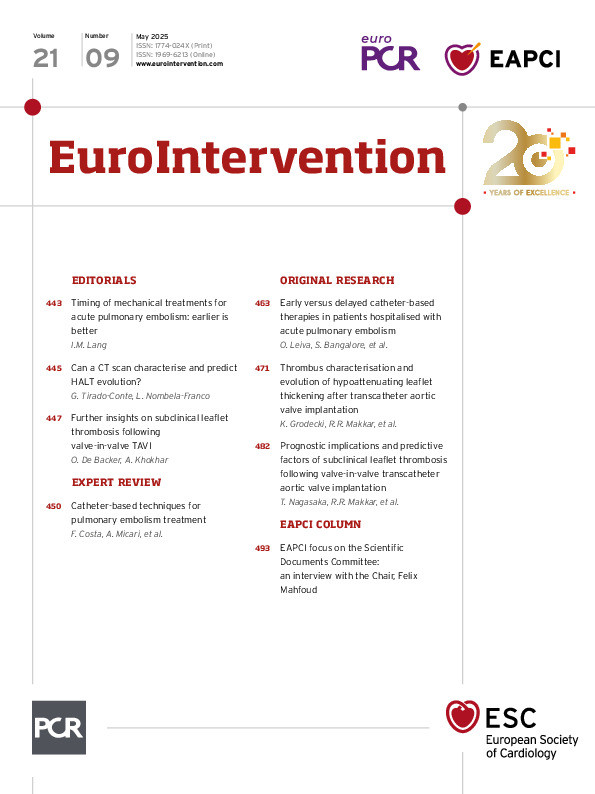Acute vascular syndromes such as acute myocardial infarction (AMI), stroke and acute intermediate-high risk pulmonary embolism (PE) confer high mortality, particularly when they result from thrombotic occlusion of major vessels, all with similar acute mortality rates of about 20%. While historically, fibrinolytic treatments have been established based on the presence of fibrin within acute thrombi, mechanical treatments have outperformed thrombolysis in AMI, have successfully complemented stroke treatments1, and represent the way forward in the treatment of acute PE2.
In contrast to fibrinolytic treatment for both AMI and stroke, systemic thrombolysis for PE appears to have a wider therapeutic window. In single acute fatal PE cases, thrombi were found to vary from a fresh loose red clot to various histological stages of organisation3, suggesting thrombus growth over a period of time. Outside of the coronary and cerebral circulation, the pulmonary circulation is assisted by the bronchial circulation which is able to provide a collateral supply of the lung parenchyma via pulmonary artery adventitial networks and prevents lung ischaemia. However, the inverse relation between duration of symptoms and response to...
Sign up for free!
Join us for free and access thousands of articles from EuroIntervention, as well as presentations, videos, cases from PCRonline.com

